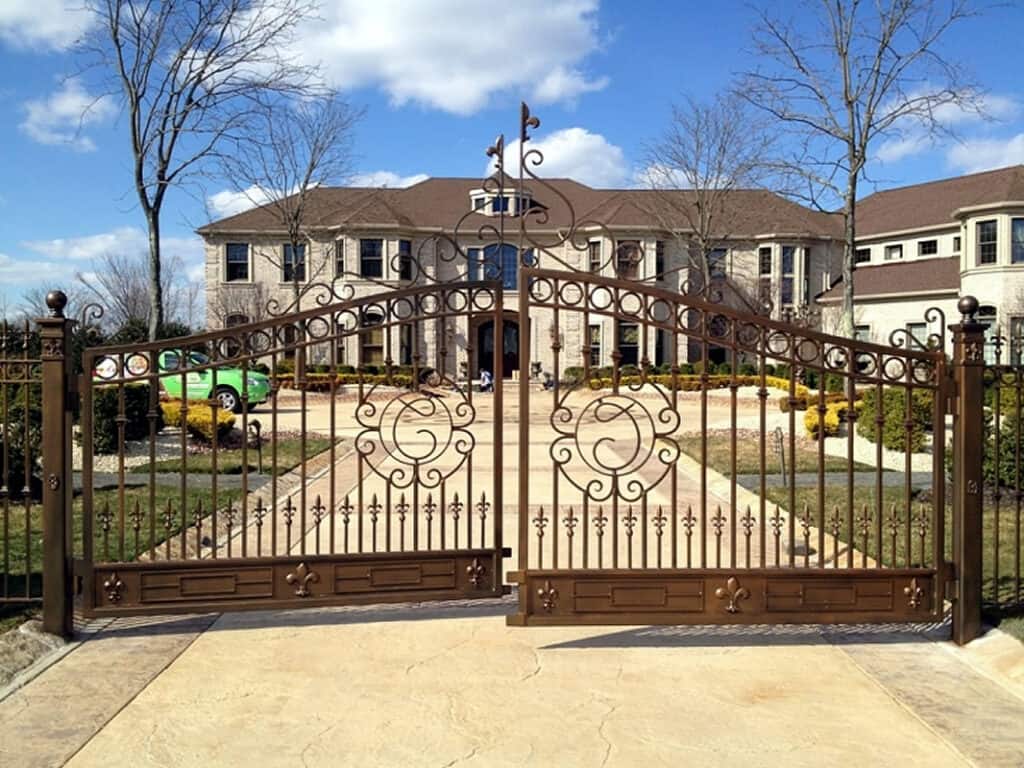[ad_1]
Recreational facilities such as parks, zoos, and museums are highly public areas that require proper security measures to ensure safety and privacy for visitors. Installing an automatic gate system is one of the most effective ways to secure these areas. Automatic gates provide many advantages, including better security, convenience, and aesthetic appeal. In this article, we will discuss the advantages of automatic gates for recreational facilities and answer some frequently asked questions about them.
Better Security
One of the main advantages of automatic gates for recreational facilities is the increased security they provide. Automatic gates are equipped with security features such as security cameras, intercoms, and access controls that prevent unauthorized access. These security measures protect the recreational facility from vandalism, theft, and other forms of damage.
The security cameras installed on the gate and around it give the facility managers the ability to monitor the gate’s activity 24/7. The cameras also record the activity and provide vital information for use in case of an incident. The monitoring system can even send alerts if someone tries to tamper with or damage the gate.
The intercom system allows the gatekeepers to communicate with the visitors either directly or through the built-in speakers. They can also screen the visitors before allowing them entrance to the facility. This additional layer of scrutiny helps to ensure that only authorized personnel have access to the facility.
The access controls on automatic gates use codes, identification cards, and biometrics to allow or deny access to the facility. This feature ensures that only authorized personnel can enter the facility. It’s an effective way to manage access to the recreational facility and maintain a secure environment.
Convenience
Automatic gates provide convenience for recreational facility visitors as well. Manual gates require people to get out of their cars, open the gates, and then close them when leaving. This process can be disruptive and time-consuming, especially during peak hours when there’s a lot of foot and car traffic.
On the other hand, automatic gates provide hassle-free access to visitors with the push of a button or a swipe of an access card. Visitors can quickly enter the facility without the need to leave their vehicles. This feature is especially helpful for those with physical disabilities or small children who find it challenging to get in and out of the car.
Moreover, automatic gates are programmed to open and close after a certain period automatically. They give visitors enough time to enter or exit the facility before closing, ensuring a smooth flow of traffic without manual intervention.
Aesthetic Appeal
Recreational facilities strive to provide a pleasant experience for their visitors, and that includes the gate area. Manual gates can look dull and uninviting, whereas automatic gates offer a modern, sleek look that enhances the facility’s aesthetic appeal.
Automatic gates come in various designs, materials, and finishes that allow recreation facility managers to choose the best option for their facility. They create an impressive visual impact and complement the facility’s architectural design.
FAQs about Automatic Gates for Recreational Facilities
Q: What maintenance is required for automatic gates?
A: Automatic gates require regular maintenance to keep them functioning well. Maintenance tasks include cleaning the gate, checking the gate’s mechanical parts, and lubricating the moving parts. Additionally, you should get a professional to inspect the gate yearly to ensure that it’s safe and secure.
Q: Are automatic gates energy-efficient?
A: Automatic gates use minimal energy, making them energy-efficient. They are designed to work only when they need to, such as when a vehicle or pedestrian approaches the gate. Most automatic gates also have sleep mode functions that save energy when not in use.
Q: What types of materials are used to build automatic gates?
A: Automatic gates come in various materials such as aluminum, steel, and wrought iron. Aluminum is lightweight, durable, and resistant to corrosion, making it a popular choice for automatic gates. Steel is strong and sturdy, making it ideal for high-traffic areas. Wrought iron, on the other hand, provides an ornate touch, making it perfect for recreational facilities with a classical aesthetic.
Q: What happens if the power goes out?
A: In case of a power failure, automatic gates have a battery backup system that allows them to continue to function when there is no electricity. This feature ensures that visitors can still enter and exit the facility despite the power outage.
In summary, automatic gates provide better security, convenience, and aesthetic appeal for recreational facilities. They are designed to ensure smooth flow of traffic, monitor activity around the gate, and prevent unauthorized access. Additionally, the convenience they offer makes them ideal for high-traffic areas such as recreational facilities. If you’re considering installing an automatic gate system for your recreation facility, consider the benefits discussed in this article to get the best value for your investment.
[ad_2]


